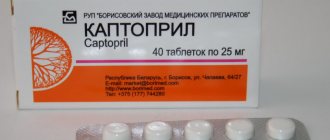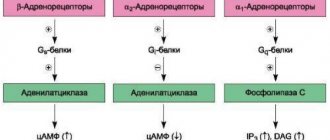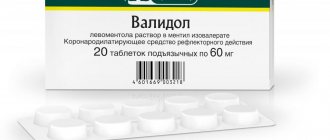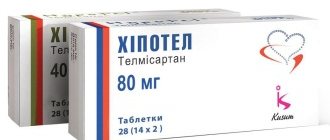Diuretics remove excess fluid from the body. Stimulate urine excretion by inhibiting the reabsorption of sodium ions in the renal canals. They have many useful properties. They are widely used in medicine for the treatment of disorders and diseases. The drugs are used for: peripheral edema, for the normal functioning of the kidneys, removal of toxins, removal of excess fluid from cavities, diseases of the heart and blood vessels.
There are several different types of diuretics, differing in chemical structure and mechanism of action. They are divided into: short-acting saline, potassium-containing, taizide. Diuretics are used for weight loss. Removes large amounts of fluid and reduces weight. They have a cleansing effect and remove decay products. They have a positive effect on the condition of the skin and the health of the body. During the period of use, you must adhere to a certain diet and exercise regularly.
Medicinal and herbal diuretics.
September 23, 2021
35698
4.6
1
Content
- How to choose a diuretic
- What are the types of diuretics?
- Classes of diuretics and indications for their use
- The best diuretics
- Hydrochlorothiazide
- Furosemide
- Indapamide
- Veroshpiron
- Torasemide
- Triampur compositum
- Diuver
- Dog-rose fruit
- Diuretic collection
- Juniper fruits
The doctor prescribes diuretics for various edema, hypertension, for the prevention of kidney stones, etc. It is no secret that some women even try to lose weight with the help of diuretics, but this is dangerous to health. The fact is that diuretics, together with liquid, remove potassium from the body - muscle contraction (including the heart muscle) is disrupted. That is why such drugs should be prescribed exclusively by a doctor, taking into account the underlying disease, possible contraindications and side effects.
Read also How to treat dehydration: 5 solutions for rehydration What drugs for dehydration are most often prescribed by doctors?
Contraindications of drugs
The use of diuretics is not always advisable. There are certain conditions that prohibit the use of this type of medicine. These include:
- Low potassium levels in the blood.
- Individual intolerance to sulfonamide substances.
- Severe form of respiratory failure.
- Acute kidney diseases.
- Any type of diabetes.
An implicit contraindication to taking diuretics is ventricular arrhythmia. This clinical condition requires adjustment of the therapeutic dose and strict medical supervision.
How to choose a diuretic
There are specific factors to consider if you choose a diuretic.
- Speed of action.
There are diuretics for emergency use: if you need to quickly lower high blood pressure (used in combination with other drugs), remove morning puffiness under the eyes. You should not take such medications often because they are addictive. Long-acting diuretics are prescribed to treat hypertension and edema associated with poor heart and liver function. - Pregnancy and breastfeeding.
Any diuretic medications are prohibited for pregnant and lactating women. And only in cases where a pregnant or lactating woman has a threat to her health and life, is it possible to use them. Usually this phrase sounds like “the benefit to the mother outweighs the risk to the fetus.” The exception is practically harmless herbal diuretics, but a woman should talk to her doctor before using them. - Tendency to allergies.
People with allergies may experience an undesirable reaction to both the active ingredient of the diuretic drug and its minor components. If you are allergic, consult your doctor before treatment.
In addition to diuretic medications, mild herbal remedies are often used. They are usually prescribed in the complex treatment of cystitis, urethritis, etc. Herbal diuretics not only remove excess water, but also relieve inflammation.
Drinking diuretics for weight loss is dangerous - the heart muscle suffers
Photos from open sources
When does a doctor prescribe diuretics?
List of indications for use:
- Arterial hypertension not complicated by renal failure
. A decrease in systolic pressure occurs due to a decrease in blood volume in the vascular system. There is no sharp drop in pressure; its levels decrease moderately, without the development of hypotension. The hypotensive effect is achieved by increasing the potassium content and decreasing sodium. After 1-2 months, diastolic pressure normalizes while maintaining cardiac output. Diuretics are not addictive and do not affect potency or libido.
- Chronic circulatory failure due to edema and arterial hypertension
. To correct this condition, strong diuretics of short and medium duration are used. Indications for emergency treatment: pulmonary edema, cerebral edema, barbiturate poisoning.
- Prevention of hypokalemia and secondary hyperaldosteronism
against the background of hypertension and chronic renal failure.
- Diabetes insipidus.
- Glaucoma.
What are the types of diuretics?
All diuretic drugs are divided into several categories: according to their spectrum of use and mechanism of action.
- Loop diuretics.
These drugs have the strongest effect (they begin to act literally a few minutes after administration), but the effect ends just as quickly. Such drugs are well suited for the treatment of hypertension and heart failure. But loop diuretics have a significant disadvantage - along with water, they remove potassium from the body, which is fraught with the development of arrhythmia. - Thiazide diuretics.
Another effective diuretic drug. They not only get rid of excess fluid, but also dilate peripheral vessels. Thiazide diuretics also reduce the response of blood vessels to adrenaline, so they spasm less. Such diuretics are also prescribed for the treatment of urolithiasis. Among the “side effects” are the excretion of potassium and an increase in uric acid, which can then accumulate in the joints and cause gout. - Potassium-sparing diuretics.
Such diuretics do not remove potassium from the body, protecting the patient from various heart complications. But these drugs are not as potent as the previous ones. - Osmotic diuretics.
This group of drugs reduces blood plasma pressure - excess water is quickly removed from the tissues, swelling goes away. The pressure in the tissues and in the plasma becomes the same. Typically, osmotic diuretics are prescribed to relieve swelling of the brain, lungs, and high intraocular or intracranial pressure.
History of the origin of diuretics
Over the years, scientists have tried to discover organic and inorganic substances to treat edema. In the early 16th century, weak diuretics were used. Such as sea onion and calomel. In the 20s of the last century, people began to use mercury-containing substances to reduce swelling.
In 1950, the first taizide diuretics, chlorothiazide and hydrochlorothiazide, were synthesized. They are close in chemical structure to sulfonamides. In 1960, the structure of substances was modified. More effective loop diuretics, furosemide and ethacrynic acid, have been created. Diuretics with antikaliuretic activity have been synthesized. The drugs began to be widely used in medicine to treat diseases.
Classes of diuretics and indications for their use
Main indications for the use of diuretics of various classes
| Diuretic class | Indications |
| Osmotic | Edema of the brain, lungs, acute attack of glaucoma, barbiturate poisoning |
| Carbonic anhydrase inhibitors | Edema due to pulmonary heart failure, glaucoma, epilepsy |
| Loop | Hypertensive crisis, cerebral edema, chronic renal failure, poisoning with water-soluble poisons |
| Thiazides and thiazide-like diuretics | Hypertension, cardiovascular failure, liver cirrhosis, nephrosis, pregnancy nephropathy, glaucoma |
| Potassium-sparing | Hypertension, heart failure, liver cirrhosis, hypokalemia during treatment with diuretics of other groups |
| Vegetable | Renal edema, whistitis, chronic renal failure |
| Xanthine derivatives | Hypertension, heart failure (in complex therapy) |
Hydrochlorothiazide
One of the most effective means for removing excess fluid and sodium salts from the body. Hydrochlorothiazide is prescribed for diseases of the kidneys, heart, lungs, to reduce blood pressure and reduce swelling. The drug does not form metabolites and is excreted unchanged by the kidneys. The maximum effect of the diuretic is achieved 4 hours after administration, and it lasts for 12 hours. Patients about it has a pronounced diuretic effect, any swelling quickly goes away, it is inexpensive. Among the disadvantages is a large list of “side effects” and the removal of important microelements from the body (including potassium and magnesium).
Hydrochlorothiazide
OZON, Russia; Pranapharm LLC, Russia; PJSC "Biokhimik", Russia; OJSC Borisov Plant of Medical Preparations (Borimed), Belarus; PJSC Valenta Pharm, Russia
A diuretic drug that is used for: Arterial hypertension, edema syndrome of various origins (chronic heart failure, nephrotic syndrome, renal failure, fluid retention in obesity), diabetes insipidus, glaucoma (subcompensated forms).
from 34
5.0 1 review
1641
- Like
- Write a review
DIURETICS (CLASS S 5)[edit | edit code]
According to the 2008 List of Prohibited Substances and Methods, masking agents include various types of diuretics.
Diuretics in the List of Prohibited Substances and Methods (2008) are represented by the drugs acetazolamide, amiloride, bumetanide, canrenone, chlorthalidone, ethacrynic acid, furosemide, indapamide, metolazone, spironolactone, thiazides (for example, bendroflumethiazide, chlorothiazide, hydrochlorothiazide), triamterene, and other substances with a similar chemical structure or similar biological effects (with the exception of drosperinone, which is not prohibited). With regard to diuretics, it is noted that the permit for their therapeutic use is not valid if the athlete’s urine, in addition to the diuretic, contains another prohibited substance in a threshold or subthreshold concentration.
Diuretics (diuretics)
- medicines of different chemical structures that help increase the formation and excretion of urine. Due to the fact that in the mechanism of the diuretic action of most drugs the main role is played by increasing the excretion of salts from the body, drugs in this group are also called saluretics (Latin sal - salt).
Historical background[edit | edit code]
The history of diuretics is quite interesting. Edema has attracted attention since ancient times. Throughout the existence of medicine, intensive searches have been carried out for organic and inorganic substances, which today we classify as diuretics. These searches were unsuccessful, and by the beginning of the 20th century. medicine had in its arsenal very weak drugs - calomel, sea onion, etc. Later, ineffective drugs (close to caffeine) were also used. Only in 1919-1920. By chance, due to a medical error, the diuretic effect of mercury compounds used in the treatment of syphilis was discovered. These were the first highly active diuretics, but they had significant toxicity. Now diuretic mercury drugs are not used, but their study played a huge role in the development of modern ideas about the diuretic and extrarenal mechanisms of action of diuretics. Thanks to these data, since the 1960s, dozens of groups of diuretics with different mechanisms of action have been created, used in practical work, and designed according to predetermined properties in an unusually short time.
Amiloride was isolated in 1966 as a result of exploratory screening for antikaliuretic activity of 25 thousand purposefully synthesized compounds. The creation of thiazides and other modern diuretics is associated with observations in which it was discovered that patients receiving sulfonamides developed metabolic acidosis with alkalinization of urine. It has been established that these drugs cause diuresis with the release of sodium bicarbonate. Understanding the possible benefit of this diuretic effect led to the development of acetazolamide and later the thiazides.
When acetazolamide's competitor, dichlorphenamide, was synthesized, it was found to increase sodium chloride excretion to a greater extent relative to sodium bicarbonate excretion. This change appeared to be desirable, indicating a mechanism of action other than carbonic anhydrase inhibition. Further modifications of the molecule led to the creation of disulfamoylchloroaniline, although a weak diuretic, but which served as the basis for the synthesis of the cyclic compound chlorothiazide (the first thiazide). This compound had little effect on carbonic anhydrase activity, but selectively inhibited the reabsorption of sodium chloride in the distal tubules. Loop diuretics were subsequently created based on thiazides.
It should be noted that scientists of the former USSR - physiologists, pharmacologists and clinicians E. B. Berkhin, A. V. Vinogradov, A. G. Ginetsinsky, G. A. Glezer, O. M. Eliseev, A. A. Lebedev, A. K. Merzon, Yu. V. Natochin, M. Ya. Ratner, B. A. Sidorenko, E. M. Tareev and others - made a significant contribution to the study of the mechanism of action of diuretics and the features of their use in various diseases.
Of all the diuretics in sports, furosemide is most often used, for the use of which in 1988, in particular, the Bulgarian weightlifters M. Grablev and A. Genchov were disqualified.
Furosemide
This diuretic is one of the most popular and frequently prescribed, and is a strong diuretic. Furosemide removes excess water and sodium salts from the body well and quickly, and relieves swelling. The drug is indicated for hypertension, poor functioning of the heart, kidneys and liver. Diuretic tablets begin to act 20-30 minutes after administration. Furosemide is usually used in emergency cases. You cannot take the drug without medical supervision, because self-medication can lead to dehydration. Furosemide is inexpensive, acts quickly, but has many side effects, including the removal of potassium and magnesium.
Furosemide
Sopharma, Bulgaria; PJSC "Biosintez", Russia; Binnopharm, Russia; JSC Avexima, Russia; Update, Russia; JSC Pharmstandard-TomskKhimPharm, Russia; "Moskhimfarmpreparaty" named after. N. A. Semashko, Russia; Ozon LLC, Russia; OJSC Borisov Plant of Medical Preparations (Borimed), Belarus; JSC Dalkhimfarm, Russia
Edema syndrome of various origins (with chronic heart failure, cirrhosis of the liver (portal hypertension syndrome); edematous syndrome of renal origin (with nephrotic syndrome, treatment of the underlying disease is in the foreground), acute heart failure, especially with pulmonary edema (used in combination with other therapeutic agents) measures); cerebral edema; severe forms of arterial hypertension; hypertensive crisis; forced diuresis in case of poisoning with chemical compounds excreted unchanged by the kidneys.
from 16
2.0 1 review
1513
- Like
- Write a review
Indapamide
This is a moderate-acting drug that is usually prescribed for edema associated with heart failure. "Indapamide" is quickly absorbed into the gastrointestinal tract. Diuretic tablets reduce the load on the heart and peripheral vessels and stabilize blood pressure. The effect occurs an hour after taking the drug and lasts 12-18 hours. You can buy Indapamide with a prescription, it is inexpensive, but it is a generic (not the original drug). Be sure to check the possible side effects.
Indapamide
OZON, Russia
Arterial hypertension;
sodium and water retention in chronic heart failure. from 8
945
- Like
- Write a review
Veroshpiron
This is a potassium-sparing diuretic, which is prescribed for edema due to chronic heart failure and hormonal problems. And although Veroshpiron has a weak diuretic effect, the drug does not remove potassium and does not upset the acid-base balance in the body. The maximum effect of the diuretic occurs after 2-3 days and lasts a long time. You can buy Veroshpiron with a prescription; it is important to take into account the impressive list of contraindications.
Veroshpiron
Gedeon Richter, Hungary
The drug Veroshpiron is a potassium-sparing diuretic.
from 64
989
- Like
- Write a review
Read also Diet pills: effective drugs for weight loss List of the most effective weight loss pills.
University
→ Home → University → University in the media → Algorithm for the use of diuretics in outpatient practice
To date, few studies have examined the effect of diuretic therapy on the prognosis of patients with fluid retention syndrome (FRS).
When prescribing diuretics, specialists rely primarily on their own clinical experience. It is known that the use of diuretics in those with signs of fluid retention is fraught with side effects (dehydration, hypokalemia, cardiac arrhythmias). It is especially difficult for doctors in outpatient practice to control the results of treatment: they are forced to delegate a significant part of the responsibility for taking medications to patients and their relatives.
The proposed algorithm for prescribing diuretic therapy for CVD was created on the basis of research, recommendations, and clinical experience and is intended to optimize the management of this complex category of patients in an outpatient setting.
Basic rules for prescribing diuretics for CVD Diuretic therapy should begin only if there are symptoms and signs of fluid retention, which include:
• appearance or worsening of inspiratory shortness of breath, tachypnea (RR >16 per minute);
• paroxysmal nocturnal suffocation;
• paroxysmal night cough (in the absence of COPD);
• need to raise the head of the bed to sleep (possibly orthopnea);
• appearance of peripheral edema;
• accumulation of fluid in cavities (ascites, hydrothorax, hydropericardium);
• weight gain by 2 kg in 1 week;
• swelling and pulsation of the neck veins (venous pulse);
• moist rales in the lungs;
• increase in the direct size of the liver;
• X-ray signs of stagnation in the pulmonary circulation (venous hypertension);
• increased left ventricular filling pressure.
If the listed signs and symptoms develop within 1–3 days and are accompanied by tachycardia and hypotension, then such a condition should be regarded as acute decompensation of cardiac activity.
In this case, the proposed algorithm is not applicable and, as a rule, rational management of the patient in an outpatient setting is not possible.
If HF appears as a result of chronic heart failure, then diuretics should be prescribed in combination with ACE inhibitor therapy (if they are intolerant to angiotensin II receptor antagonists, beta-blockers and mineralocorticoid receptor antagonists (MCRA)).
Diuretics for CVS should be used continuously, diuretic therapy should be carried out daily. Intermittent courses of diuretics provoke hyperactivation of neurohormonal systems and may contribute to the progression of CVD.
Weighing yourself daily is important. The maximum permissible weight loss is 1 kg/day, in an outpatient setting - no more than 0.5 kg/day. Dehydration and excessive diuresis are more dangerous than the edema syndrome itself.
Prescribing and titrating the dose of diuretics to increase requires mandatory monitoring of the level of blood electrolytes, glomerular filtration rate (GFR), and the duration of the QT interval at least once a week. Once the condition has stabilized, potassium and creatinine/GFR levels can be determined once every 3–6 months.
When a clinical effect is achieved (reduction in the manifestations of life-threatening symptoms, increase in tolerance to physical activity), it is necessary to begin titrating the dose of the diuretic “downward” with daily weight monitoring. If the patient's condition stabilizes, it is even possible to discontinue the diuretic (the patient should be monitored regularly). When prescribing active diuretic therapy, it is important to remember the peculiarities of the water-salt regime. Optimal diuresis is achieved if treatment is carried out on a diet with the usual amount of sodium with a slight decrease in the volume of fluid drunk (1–1.2 l/day). That is, it is advisable not to sharply reduce salt intake, but only to limit liquids.
Algorithm for prescribing diuretics
If RLS leads to a slight limitation of the patient’s physical activity, which corresponds to class II CHF, in order to make a decision on the choice of diuretics, it is necessary to evaluate renal function and the basic therapy taken (Fig.).
It is preferable to begin diuretic therapy with starting doses of loop diuretics (LDs). Thiazide diuretics (TD), if previously prescribed, can be continued if HF develops in patients with arterial hypertension (AH) and preserved renal function. TDs are safe only in combination with ACE inhibitors or ARBs. Particular attention is paid to the dose. For the treatment of CHF, doses of hydrochlorothiazide (HCTZ) of 25 mg and higher are recommended. In this range, it can lead to severe metabolic disorders, in particular hypokalemia, hyponatremia, and the emergence of new cases of diabetes mellitus. A dose of hydrochlorothiazide of 12.5 mg/day, which is usually prescribed in combination with ACE inhibitors/ARBs as an antihypertensive agent, has a weak diuretic effect.
Achieving positive diuresis using TD is associated with a higher likelihood of hypotension than using PD. A decrease in blood pressure is an independent factor of negative prognosis in patients with CHF, the main cause of HF.
It should be especially noted that even with moderate chronic kidney disease (CKD), the effectiveness of TDs decreases, and a decrease in GFR of less than 30 ml/min/1.73 m2 is an absolute contraindication to their use.
All of the above significantly narrows the role of TD in modern treatment regimens for gastrointestinal tract diseases. They can be included in combination diuretic therapy if large doses of PD are ineffective.
If a clinically significant HF is detected, it is possible to continue taking TDs if they were prescribed as part of combination antihypertensive therapy in a patient with hypertension while maintaining SBP > 140 mm Hg. Art. and GFR > 60 ml/min/1.73 m2. However, in this situation, to eliminate signs of fluid retention, it is necessary to add PD in starting doses. GFR is calculated using the MDRD formula. GFR = 186 (creatinine (in µmol/l) / 88) – 1.154 (age (in years) – 0.203) (for women the result is multiplied by 0.742). Calculation of endogenous creatinine clearance (CC) can be carried out using the Cockcroft–Gault formula: CC = (140 – age) weight (in kg) / creatinine 1.22 (for men); CC = (140 – age) weight / creatinine 1.03 (for women).
TD therapy requires daily monitoring of electrolytes in the first stages due to the high risk of hypokalemia, which is difficult to organize in an outpatient setting.
If the patient has significant limitations in physical activity or the clinical picture of the life-saving lifestyle manifests itself at rest (FC III–IV), then it is necessary to begin diuretic therapy with starting doses of PD (Table).
Advantage should be given to PDs with a long half-life and predictable absorption from the gastrointestinal tract. Extending the release interval of diuretic drug molecules, achieved through the use of a special matrix, reduces the peak concentration of the drug in the blood and increases the time of maximum drug concentration. In this regard, when using such drugs (sustained-release torasemide), a milder and more predictable diuretic effect develops, which worsens the quality of life to a lesser extent. In addition, sustained-release torasemide reduces the patient's risk of developing peak natriuresis, which can lead to renal tubular damage, as well as compensatory activation of the SAS and RAAS, which reduces the result of diuretic therapy.
If the starting doses of PD are ineffective, they should be doubled, but the maximum allowable doses cannot be exceeded. If furosemide is chosen as the starting drug, it is preferable to switch to torsemide due to higher bioavailability in patients with edema syndrome (the dose ratio of torasemide to furosemide is approximately 1:4). If high doses of PD do not lead to relief of the manifestations of CVD, it is recommended to add a carbonic anhydrase inhibitor - acetazolamide. This drug, in addition to its diuretic effect, has the ability to change the pH of urine to the acidic side and can lead to the restoration of sensitivity to PD. The following regimen is usually followed: acetazolamide 250 mg 2-3 times a day for 3-4 days (once every 2-3 weeks). If therapy has not led to a significant improvement in the patient’s condition and he remains limited in physical activity at the level of FC II–IV, it is necessary to prescribe or increase doses of AMCR up to the maximum.
• Increasing doses of AMKR for life-saving lifestyle is allowed up to 200 mg/day for veroshpiron. The dose of the drug should be divided into 2 doses: in the morning and at lunch.
• Increasing AMKR doses is allowed only in situations where CKD is not more severe than stage 3 and potassium levels are normal or low.
• Laboratory monitoring of potassium and creatinine (GFR) is strictly required. When the potassium level is more than 5.0–5.5 mmol/l, the AMKR dose is halved. If GFR decreases < 10 ml/min/1.73 m2, discontinuation of AMCR is required.
• If the potassium level differs more significantly from the norm—more than 5.5 mmol/l—the dose is adjusted until the drug is discontinued, and a low-potassium diet is prescribed.
• After reducing the dose by 50%, a repeated increase in the AMKR dose is possible after 1 month, provided that normokalemia is persistent.
• If the condition is stable and there are no fluctuations in creatinine levels, potassium levels should be monitored once every 3 months.
• It must be remembered that the combination of an ACE inhibitor and a MAKR should always be considered as potentially leading to hyperkalemia. The ineffectiveness of all of these measures requires an assessment of the possible causes of refractoriness to diuretic therapy. The causes of edematous syndrome refractory to combined diuretic therapy may be:
• slowing down the absorption of diuretics (mainly furosemide) in the gastrointestinal tract in patients with ascites and anasarca;
• uncontrolled polydipsia;
• uncontrolled intake of NaCl;
• severe hypotension;
• current NSAID therapy;
• progression of renal failure;
• hypoalbuminemia.
The next stage of treatment for SGI should include intravenous bolus or drip administration of diuretics (furosemide), and, if necessary, a combination of PD and HCTZ.
It is likely that in this situation low systemic blood pressure comes to the fore. In this case, it is important not to further increase diuretic therapy, but to increase plasma flow through the kidney, which is achieved by introducing pressor amines.
There is also a high probability of need for non-drug methods of combating CVD - hemodialysis, ultrafiltration, etc. At this stage, it is unrealistic to continue outpatient management of the patient; the tactics of his further treatment are beyond the scope of this algorithm.
Obviously, the presented algorithm does not consider all possible clinical situations. It does not replace the need for an individual approach, taking into account the underlying and concomitant diseases, the patient’s living conditions and the experience of the attending physician. However, it indicates the main directions for finding rational solutions in the management of patients with fluid retention syndrome in outpatient practice.
Alexander Bova , doctor of medicine. Sciences, Professor, Honored Doctor of the Republic of Belarus,
Sergey Tregubov , assistant at the Department of Military Field Therapy, BSMU Medical Bulletin , August 6, 2014
Share
Torasemide
This diuretic drug is one of the most effective today. "Torasemide" is prescribed for acute and chronic heart failure, as well as renal failure. The product can also be taken to prevent edema. The drug effectively reduces high blood pressure by quickly removing excess fluid and sodium salts. The effect occurs an hour after administration and lasts 12-18 hours. Patients note that the diuretic effect does not occur immediately, so in the first hour after taking the drug you do not have to limit your activity. "Torasemide" is inexpensive and works well to relieve swelling of the face. You can buy diuretic tablets with a prescription; there are some side effects.
Torasemide
Berezovsky Pharmaceutical Plant, Russia
Edema syndrome of various origins, incl.
for chronic heart failure, diseases of the liver, kidneys and lungs; - arterial hypertension. from 81
673
- Like
- Write a review
Triampur compositum
This diuretic does not have a very pronounced effect and does not remove potassium from the body, only water, salts and toxins. That is why Triampur compositum is considered the safest diuretic drug, which is prescribed for edema due to chronic heart failure and liver problems. Triampur begins to act 15 minutes after administration, and the effect lasts about 12 hours. Doctors say that this diuretic is safe for relieving facial swelling, is quickly absorbed into the gastrointestinal tract, and has a gentle effect.
Triampur compositum
AVD.pharma, Croatia
-arterial hypertension;
—edematous syndrome of various origins (with chronic heart failure, nephrotic syndrome, liver cirrhosis). from 256
508
- Like
- Write a review
Diuver
Modern diuretic tablets from the group of loop diuretics. The active ingredient of the drug, turasemide, copes well with edema of various natures. “Diuver” has the mildest, prolonged action; the effect after administration occurs within 3-4 hours. Although it is not a potassium-sparing diuretic, it removes much less potassium than other diuretics. Diuver is prescribed for diseases of the kidneys, liver, lungs and heart failure. You can buy Diuver with a prescription (by the way, it is not cheap), be sure to familiarize yourself with the contraindications and side effects.
Diuver
JSC "Biolek", Ukraine
- edematous syndrome of various origins, incl.
for chronic heart failure, diseases of the liver, kidneys and lungs; - arterial hypertension. from 236
706
- Like
- Write a review
Natural Diuretics
Photos from open sources
Mechanism of action of diuretics
The main mechanism of action of diuretics is their effect on the kidneys. First of all, on the structural and functional unit or nephron, where the processes of glomerular filtration, tubular reabsorption and secretion occur. To better understand the action of diuretics, it is necessary to consider the process of kidney functioning and the mechanism of urine formation.
Each kidney contains approximately 1 million nephron formations that do not communicate with each other. They consist of a vascular glomerulus (glomerulus), a glomerular capsule and tubules. In the renal glomerulus, plasma is filtered from the capillaries into the capsule cavity. The endothelium of the capillaries does not allow the penetration of blood elements and proteins.
The resulting filtrate is called primary urine. Subsequently, it penetrates the kidney tubules. The filtration process in the kidneys occurs due to the difference between the arterial and oncotic pressure of the blood plasma. A decrease in blood pressure leads to a decrease in the filtration rate in the kidneys. Increasing blood pressure increases the filtration rate.
The glomerular filtration rate depends not only on the blood supply to the kidneys, but also on the number of functioning nephrons. On average, glomerular filtration in an adult is 100 ml per minute. Every day, the human body filters about 200 liters of liquid. Urine is released on average about 2 liters. About 99% of primary urine is reabsorbed in the tubules.
The reabsorption process occurs throughout the nephron. To increase the amount of urine excreted, the glomerular filtration rate must be increased. The process of urine formation ends in the distal nephron and collecting ducts. Transport processes are regulated by hormonal influences. Taking diuretics helps increase the rate of urine formation. Reduce the amount of primary urine that is affected by the reabsorption process.
The clinical use of diuretics almost universally preceded the localization of their site of action. The consequence of diuretic specificity predicts clinical use and side effects, and the proximity of sodium transporters, one to another, often dictates the potency or effectiveness of the diuretic. All diuretics act by inhibiting the normal transport of sodium from the filtrate into the renal tubular cells. This movement of sodium into renal epithelial cells from the apical side is facilitated by a number of transporters, the function of which in turn depends on adenosine triphosphate (ATP), a Na-K dependent cotransporter on the basolateral side of the cell. Growing understanding of the physiology of sodium transport has generated new opportunities for the development of diuretics.
Dog-rose fruit
In addition to medicinal diuretics, herbal drugs have a mild diuretic effect. Firstly, it is rosehip. In addition to being a diuretic, it is famous for its general strengthening effect, helping the body resist various infections (also for urinary tract diseases). Rosehip improves the functioning of the digestive and cardiovascular systems. The value of rosehip is that it contains a lot of useful vitamins. Rose hips relieve swelling, reduce cholesterol levels, normalize blood clotting, and help cells recover faster.
Rosehip fruits
OJSC Krasnogorskleksredstva, Russia
For the prevention of hypovitaminosis C and R. In the complex therapy of acute and chronic infectious diseases, asthenic conditions, during the period of recovery after serious illnesses, surgical operations
from 28
436
- Like
- Write a review
How to take diuretics
Preparations for diuretic therapy are available in the form of tablets, powders and solutions for intravenous administration. Depending on the clinical case, the doctor selects one drug or a combination of several drugs with different mechanisms of action.
The basic rule for taking diuretics is to use the medicine on an empty stomach and take it with plenty of water.
Diuretic collection
Herbal infusions are very popular for the treatment of many diseases, including as a diuretic for edema. Diuretic collection in complex treatment helps cure urinary tract infections. Medicinal herbs in the diuretic collection act very gently, relieve spasms and inflammation. A diuretic preparation is often prescribed for cystitis; it is suitable for preventing relapses of this disease and is available in almost every pharmacy. Disadvantages include an unpleasant taste and green coloration of urine.
Diuretic collection
ST-Medipharm, Russia
Combined product of plant origin.
It has diuretic, anti-inflammatory, antiseptic, antispasmodic effects. from 76
5.0 1 review
601
- Like
- Write a review
Juniper fruits
Juniper helps with urinary tract infections by reducing inflammation and destroying germs. And thanks to the diuretic effect, pathogenic microflora is quickly eliminated from the body. Juniper fruits are also used as an appetite stimulant and to improve the functioning of the gastrointestinal tract. In addition, this herbal preparation stabilizes blood pressure and has a mild laxative effect. Contraindications include pregnancy, breastfeeding and childhood.
Juniper fruits
OJSC Krasnogorskleksredstva, Russia
In the complex treatment of edematous syndrome (with heart failure, insufficiency of kidney and/or liver function), cystitis
from 49
259
- Like
- Write a review











